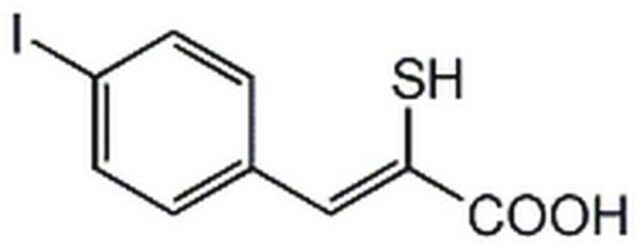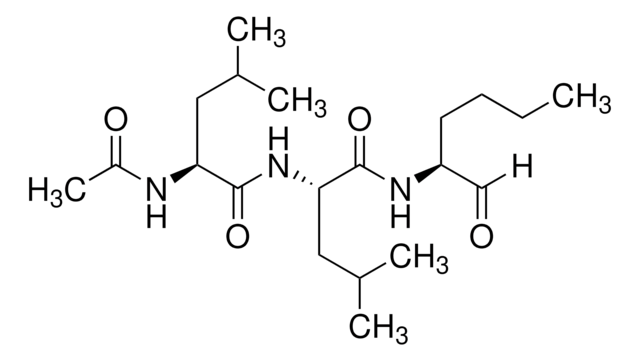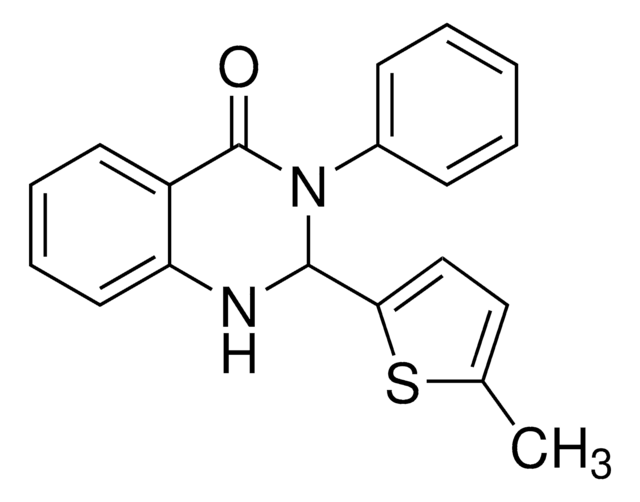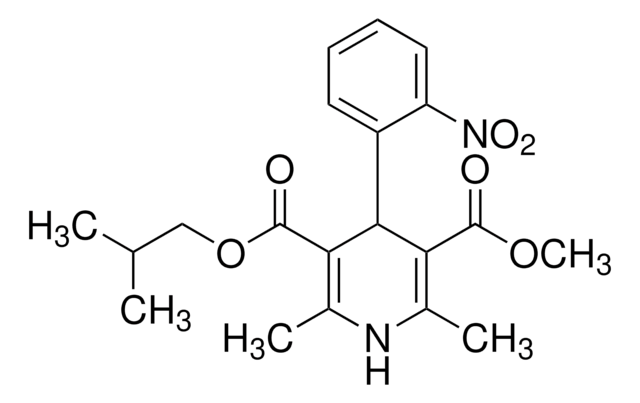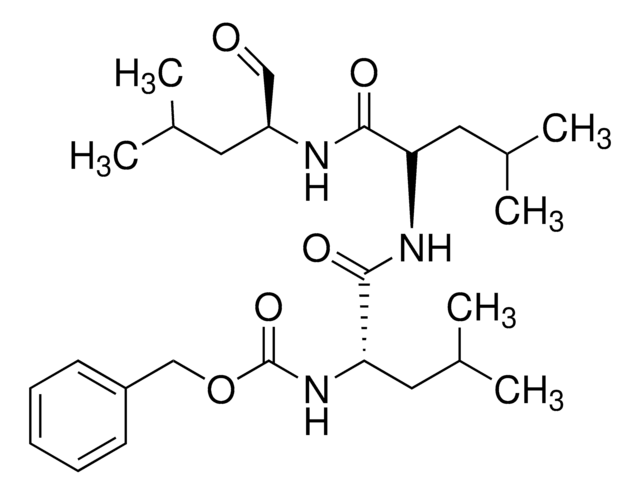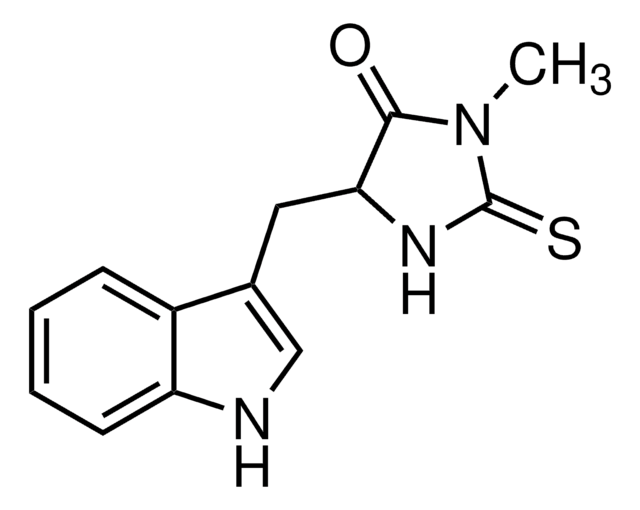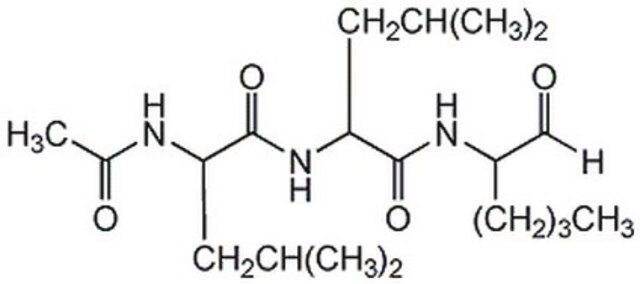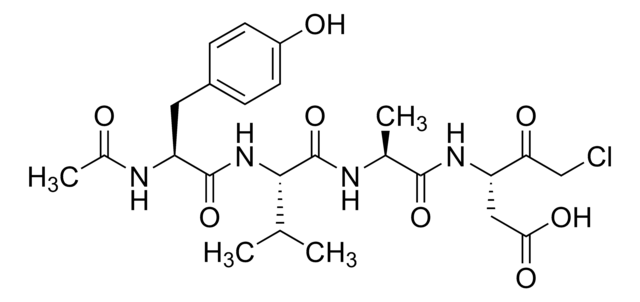Wichtige Dokumente
D5946
PD 150606
≥97% (HPLC)
Synonym(e):
(2Z)-3-(4-iodophenyl)-2-mercapto-2-Propenoic acid, 3-(4-iodophenyl)-2-mercapto-(Z)-2-propenoic acid
About This Item
Empfohlene Produkte
Qualitätsniveau
Assay
≥97% (HPLC)
Form
powder
Lagerbedingungen
protect from light
Farbe
yellowish
Löslichkeit
DMSO: >20 mg/mL
Lagertemp.
−20°C
SMILES String
OC(=O)\C(S)=C\c1ccc(I)cc1
InChI
1S/C9H7IO2S/c10-7-3-1-6(2-4-7)5-8(13)9(11)12/h1-5,13H,(H,11,12)/b8-5-
InChIKey
DJCVSFWGKYHMKH-YVMONPNESA-N
Biochem./physiol. Wirkung
Signalwort
Danger
H-Sätze
Gefahreneinstufungen
Acute Tox. 3 Oral - Eye Dam. 1 - Skin Irrit. 2 - Skin Sens. 1 - STOT SE 3
Zielorgane
Respiratory system
Lagerklassenschlüssel
6.1C - Combustible acute toxic Cat.3 / toxic compounds or compounds which causing chronic effects
WGK
WGK 3
Flammpunkt (°F)
Not applicable
Flammpunkt (°C)
Not applicable
Hier finden Sie alle aktuellen Versionen:
Analysenzertifikate (COA)
Die passende Version wird nicht angezeigt?
Wenn Sie eine bestimmte Version benötigen, können Sie anhand der Lot- oder Chargennummer nach einem spezifischen Zertifikat suchen.
Besitzen Sie dieses Produkt bereits?
In der Dokumentenbibliothek finden Sie die Dokumentation zu den Produkten, die Sie kürzlich erworben haben.
Kunden haben sich ebenfalls angesehen
Unser Team von Wissenschaftlern verfügt über Erfahrung in allen Forschungsbereichen einschließlich Life Science, Materialwissenschaften, chemischer Synthese, Chromatographie, Analytik und vielen mehr..
Setzen Sie sich mit dem technischen Dienst in Verbindung.